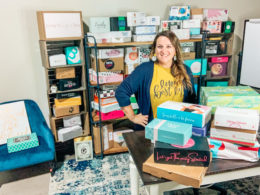Social media marketing has taken a turn no one could’ve anticipated: recognizing the value of a smaller audience. Think about it this way: when you’re in a room that contains 100 people, how likely are you to connect with each person meaningfully? Now compare that to a room of just 10 people. Micro-influencer marketing is based on the idea that influencers with a smaller following create more meaningful engagement opportunities, and research backs this up.
Better engagement
A study by Markerly compared influencers with fewer than 1000 followers to those with one to 10 million.
The micro-influencers received likes 8 percent of the time while the mega-influencers received likes just 1.7 percent of the time.
This finding also applied to comments, revealing that influencers with smaller audiences do in fact generate better engagement. Some believe this is because micro-influencers have a more targeted audience, unlike celebrities and global brands. Regardless of why it works, startups can propel their brand to new audiences by taking advantage of micro-influencer relationships.
Related: 10 Low-Cost Tools to Get Started with Influencer Marketing
How to catch a micro-influencer
Getting your very own micro-influencer isn’t difficult, but it’s also not very straightforward. You probably won’t have luck on job boards, and you’re not going to stumble upon a “micro-influencer for hire” sign anywhere. Instead, these individuals are usually found in their natural habitat: social media. The trend has especially taken off on Instagram, where thousands of micro-influencers provide a glimpse into their daily lives and the products they love. If you already use hashtags for your business, simply search for people who are using your hashtags. These people are already supporters, so they are your best bet for finding a reliable influencer. Selecting current customers is also a wonderful way to encourage and reward customer loyalty.
If you come up short online, consider in-person supporters of your business. Regular customers who are social media buffs (especially those who are social and have gotten to know others in your circle) can make great influencers.
Wherever you find them, you want to make sure they are truly cut out for the job of socializing effectively and professionally. A study by Experticity showed that micro-influencers have 22.2 times more conversations than other social media users.
Telltale signs of a good influencer
Let’s say you have someone in mind. How can you tell if they are really the right person to promote your brand? There are a few key characteristics of every great influencer. The first is consistency. Above all else, a solid influencer updates their profiles regularly with quality content (not just cat pictures). In addition, they have an area of expertise from which they continuously draw creativity. Their interests are not scattered and overwhelming, but refined and focused. Add in great people skills (e.g. they respond to comments and build friendships online) and you have likely found yourself a skilled influencer.
But what about brand compatibility? This is where you should pay extra close attention. Look at the typical audience they tend to attract. Is it similar to your audience? If not, is their audience a group that you would like to branch out and expose your brand to? Consider the expectations of such an audience and whether your brand is prepared to deliver. If you suspect an incongruence, be patient and scope out other micro-influencers. You don’t need to latch on to the first successful influencer you see.
Take the time to figure out what business goals you would like to actualize through working with an influencer. Common goals include brand awareness and sales promotions.
Sign Up: Receive the StartupNation newsletter!
Compensation
If you’ve found your social media all-star, the next thing to figure out is compensation. Much like the hiring process, there are no strict rules for how this process unfolds. Some influencers are paid flat rates, some are paid per post, and others are paid simply through perks. You might provide your influencer with promo codes, free products and discounts if money isn’t on the table. Some businesses compensate influencers based on their impact – for example, how many sales were made through a link they posted. Most importantly, be crystal clear that the terms of compensation are understood and agreed upon before the partnership begins. The last thing you need is a respected influencer with a large following and a serious distaste for your brand.
Partnering with a micro-influencer can have multifaceted benefits if done right. Your business can reach new audiences, earn more during big sales and save money on ineffective ads. With a personality that complements your brand, an influencer can make advertising a seamless endeavor.






